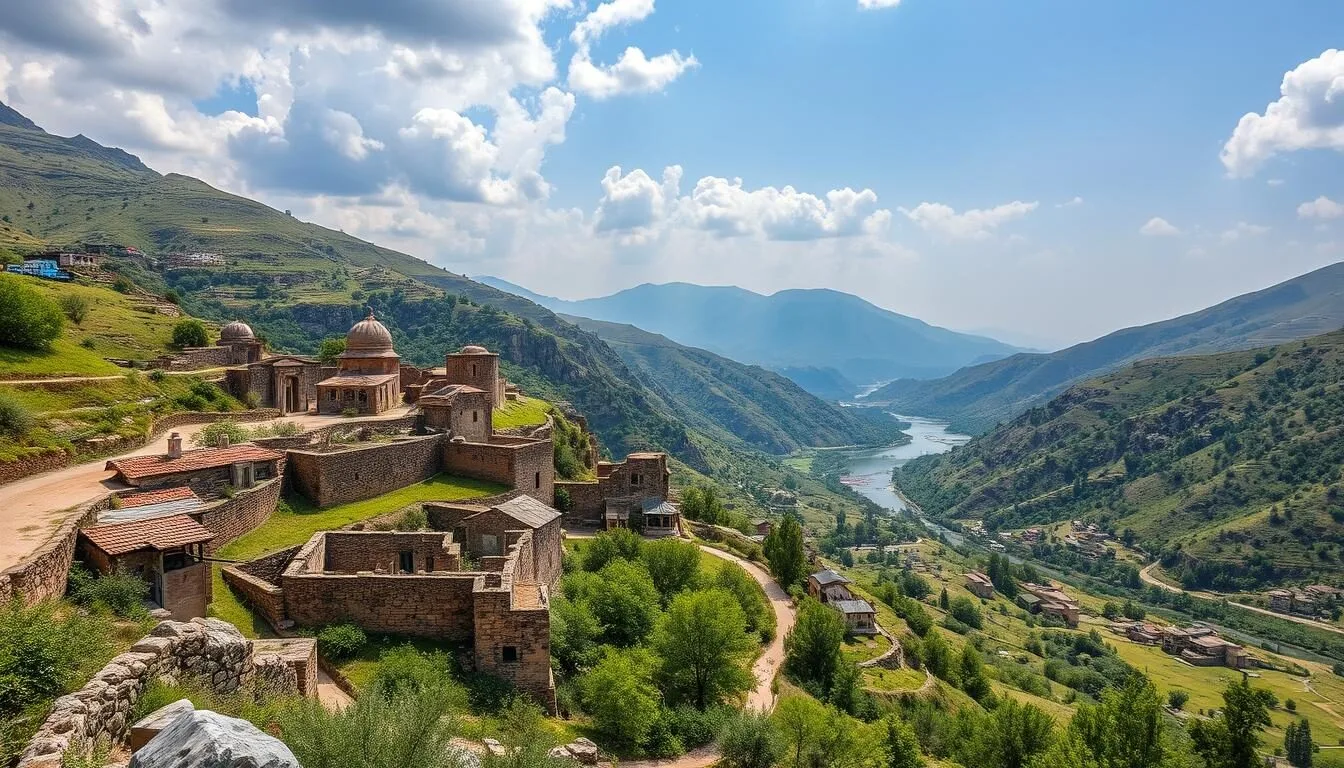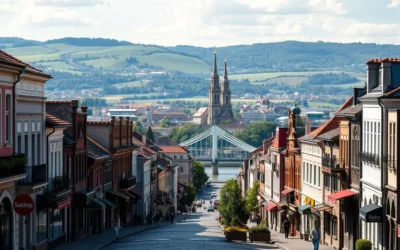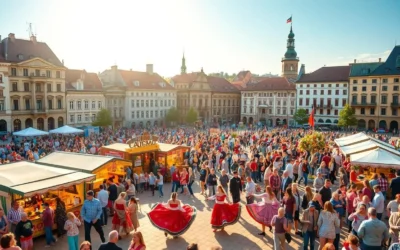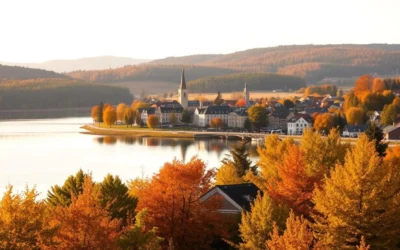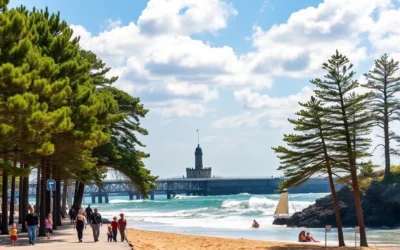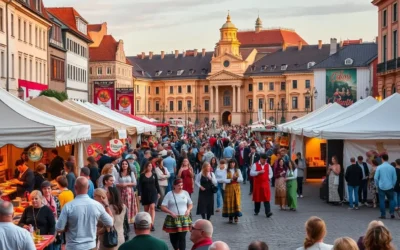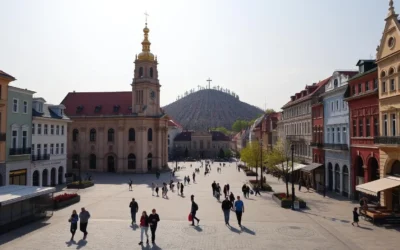✓ Accommodations✓ Flights✓ Rental Cars
Located just 35 km northwest of Vilnius, Kernave is a hidden gem waiting to be discovered. As the first capital of the Grand Duchy of Lithuania, Kernave is steeped in history and offers a unique blend of culture and natural beauty.
Discover the Ancient Capital
Kernave, a UNESCO World Heritage site, is an ideal day trip destination from Vilnius. With its rich history dating back to the 9th century BCE, Kernave served as the first capital of the Grand Duchy of Lithuania.
The landscape, formed by retreating glaciers, is a wonderful sight of impressive hill forts, settlements, burial sites, and other monuments. Visitors can expect to see five impressive hill forts, archaeological sites, and the natural beauty of the Neris River valley.
Kernave offers a perfect blend of history, culture, and outdoor activities, making it a worthwhile destination for travelers interested in Lithuania’s past. You can explore the Cultural Reserve, visit the museum, and enjoy scenic walks along the Neris River.
Despite its historical importance, Kernave remains somewhat off the beaten path, offering an authentic experience away from mass tourism. You can step back in time while enjoying the scenic landscape formed by retreating glaciers thousands of years ago.
Discovering Kernave: Lithuania’s Ancient First Capital
Embark on a journey through time as you visit Kernave, a place where ancient traditions and modern curiosity blend seamlessly. Kernave, known as Lithuania’s ancient first capital, is a treasure trove of historical significance and natural beauty.
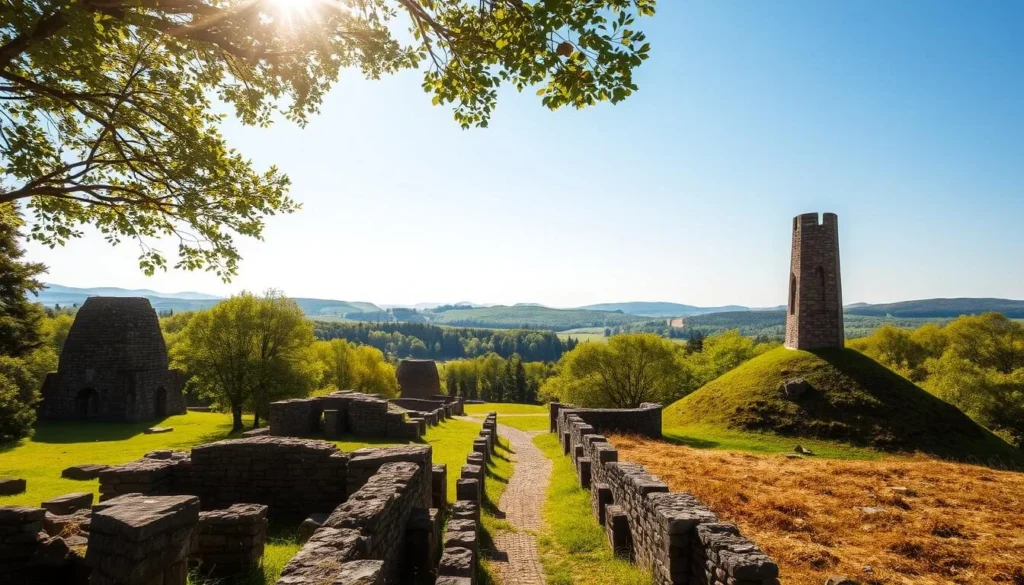
The Historical Significance of Kernave
Kernave is not just a destination; it’s an experience that delves into the heart of Lithuania’s history. The site is home to the Museum of the Archaeological Site of Kernavė and the Kernavė Open-air Museum, which are closed on Mondays, Tuesdays, and national holidays. The historical significance of Kernave is deeply rooted in its five hill forts, which are a testament to the region’s importance in medieval times.
For a truly immersive experience, plan your visit during the Live Archaeology Days, an experimental archaeology festival that takes place from July 5 to 7. This event is a unique opportunity to engage with ancient Baltic traditions, crafts, and local cuisine.
When to Visit and What to Expect
The best time to visit Kernave is during the summer months (June-August) when the weather is comfortable, and daylight hours are extended. Visitors can expect a serene atmosphere during the spring and autumn seasons, while summer brings a vibrant crowd. It’s advisable to allocate a full day to explore the site thoroughly.
To make the most of your trip, come prepared with appropriate clothing and footwear, especially if you plan to explore the hill forts and hiking trails. Don’t forget to bring water and snacks, as options in the immediate area may be limited. The ideal way to experience Kernave is either as a day trip from Vilnius or as part of a more extensive exploration of Lithuania’s historical sites.
Kernave, Lithuania: Best Things to Do – Top Picks
Kernave is a must-visit destination for history buffs and travelers alike, offering a unique glimpse into Lithuania’s rich past. As you explore this ancient land, you’ll discover a plethora of historical sites and cultural landmarks that are sure to captivate your imagination.
The UNESCO World Heritage Site: Cultural Reserve of Kernave
The Cultural Reserve of Kernave is a testament to the region’s historical significance, boasting an array of archaeological sites and ancient settlements. As a UNESCO World Heritage Site, it is recognized globally for its cultural and historical importance. Visitors can explore the remnants of ancient civilizations, gaining insight into the lives of the people who once inhabited this land.
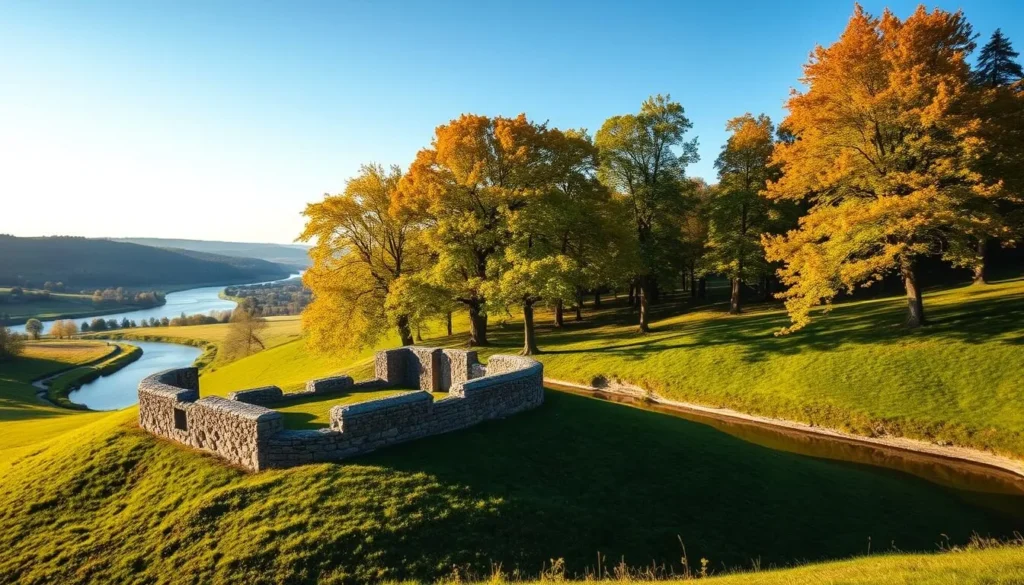
The Five Hill Forts: Lithuania’s Troy
The Five Hill Forts of Kernave are often referred to as “Lithuania’s Troy” due to their historical significance and the role they played in the country’s medieval past. These ancient fortifications provide a glimpse into the region’s military history and the strategic importance of Kernave during the Grand Duchy of Lithuania. Visitors can explore the hill forts, imagining life in medieval times.
| Historical Site | Description | Significance |
|---|---|---|
| The Five Hill Forts | Ancient fortifications that date back to the medieval period | Played a crucial role in the defense of the Grand Duchy of Lithuania |
| Cultural Reserve of Kernave | A collection of archaeological sites and ancient settlements | Recognized as a UNESCO World Heritage Site for its cultural and historical importance |
| Museum of Ancient History | Houses significant archaeological finds from Kernave | Provides insight into life from prehistoric times through the Middle Ages |
Museum of Ancient History and Archaeological Finds
The Museum of Ancient History in Kernave is a treasure trove of archaeological finds, offering visitors a chance to delve into the region’s rich history. The museum’s collection includes tools, weapons, jewelry, and everyday items that provide a glimpse into the daily lives of ancient inhabitants. With its chronological exhibits, visitors can trace the development of Kernave from its earliest settlement through its golden age as part of the Grand Duchy of Lithuania.
To fully appreciate the museum’s collection and the information it provides about this important archaeological site, it’s recommended to allocate at least 1-2 hours for your visit. The museum also offers educational programs that provide hands-on learning experiences, making it an ideal destination for families and history enthusiasts alike.
Outdoor Activities and Natural Beauty Around Kernave
The natural landscape around Kernave provides a serene backdrop for a variety of outdoor activities, from hiking to leisurely river walks. As you explore the area, you’ll find that the town’s natural beauty is a perfect complement to its rich history.
Exploring the Dūkštai Oak Woods
The Dūkštai Oak Woods are a must-visit for nature lovers. This protected area is home to centuries-old oak trees, some of which are over 600 years old. As you wander through the woods, you’ll be surrounded by the tranquil atmosphere and the sounds of nature. The woods offer several walking trails, ranging from easy to moderate difficulty, allowing visitors to choose their preferred route.
Hiking to Karmazinai Hill-Fort
For those looking for a more challenging hike, Karmazinai Hill-Fort is a great option. This hill-fort offers breathtaking views of the surrounding landscape and is steeped in history. The hike is moderately difficult and takes approximately 2-3 hours to complete. Along the way, you’ll pass through scenic forests and meadows, making it a rewarding experience for hikers.
| Hike Details | Information |
|---|---|
| Distance | Approximately 5 km |
| Difficulty Level | Moderate |
| Duration | 2-3 hours |
Scenic Walks Along the Neris River
One of the most enjoyable activities in Kernave is taking a leisurely walk along the banks of the Neris River. The views are particularly serene at sunset, making it a perfect time for a relaxing stroll. The river walks offer a chance to unwind and appreciate the natural landscape. You can choose from various walking routes, ranging from easy to moderate, depending on your preference.
As you walk along the river, keep an eye out for local wildlife, including birds and fish. The Neris River played a crucial role in the development of Kernave as a settlement and trading center, adding a layer of historical significance to your trip.
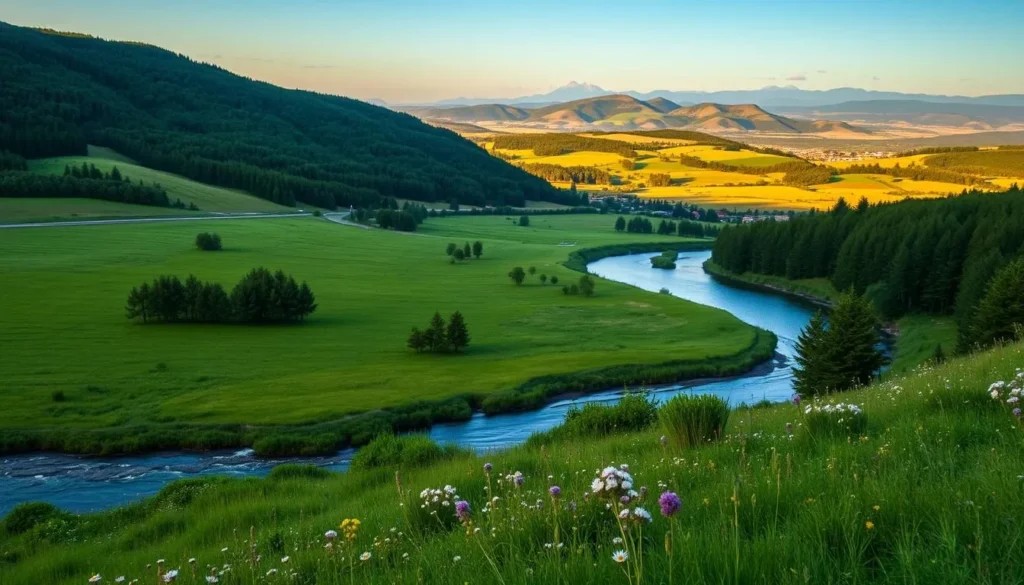
Whether you’re visiting Kernave for its history or its natural beauty, the town has something to offer everyone. With its rich heritage and picturesque surroundings, Kernave is a great destination for your next trip.
Practical Tips for Your Visit to Kernave
To ensure a memorable experience in Kernave, consider the following tips and insights.
Getting to Kernave is relatively straightforward. By car, take the A1 or A2 motorway from Vilnius and then either road 108 or 116. Alternatively, you can use public transportation from Vilnius Bus Station, platforms No. 10 or 11, with buses running about six times per day. Be sure to check the timetable in advance to plan your trip accordingly.
The Cultural Reserve of Kernave is a year-round destination, but the best time to visit depends on your preferences. If you enjoy mild weather, spring and autumn are ideal. The Museum of the Archaeological Site of Kernave and the Kernave Open-air Museum are closed on Mondays, Tuesdays, and national holidays, so plan your visit accordingly.
We recommend allocating a full day to explore the hill forts, museum complex, and surrounding natural areas. This will give you ample time to soak in the history and beauty of the area. Visitors can enjoy various facilities, including restrooms, food options, and parking. For those with mobility challenges, there are accessibility features available.
A logical itinerary would be to start with the museum complex, followed by a hike to the hill forts, and then a scenic walk along the Neris River. Don’t forget your camera to capture the impressive landscape and archaeological complex from various vantage points.
For those who wish to stay overnight, there are nearby accommodation options available. You can also consider guided tours of the reserve, which are available in multiple languages. Be sure to arrange these in advance to ensure availability.
When exploring the outdoor sites, wear comfortable footwear and clothing suitable for hiking. Finally, consider combining your visit to Kernave with other nearby attractions to create a more comprehensive experience of the region.
—
The above is subject to change.
Check back often to TRAVEL.COM for the latest travel tips and deals.
